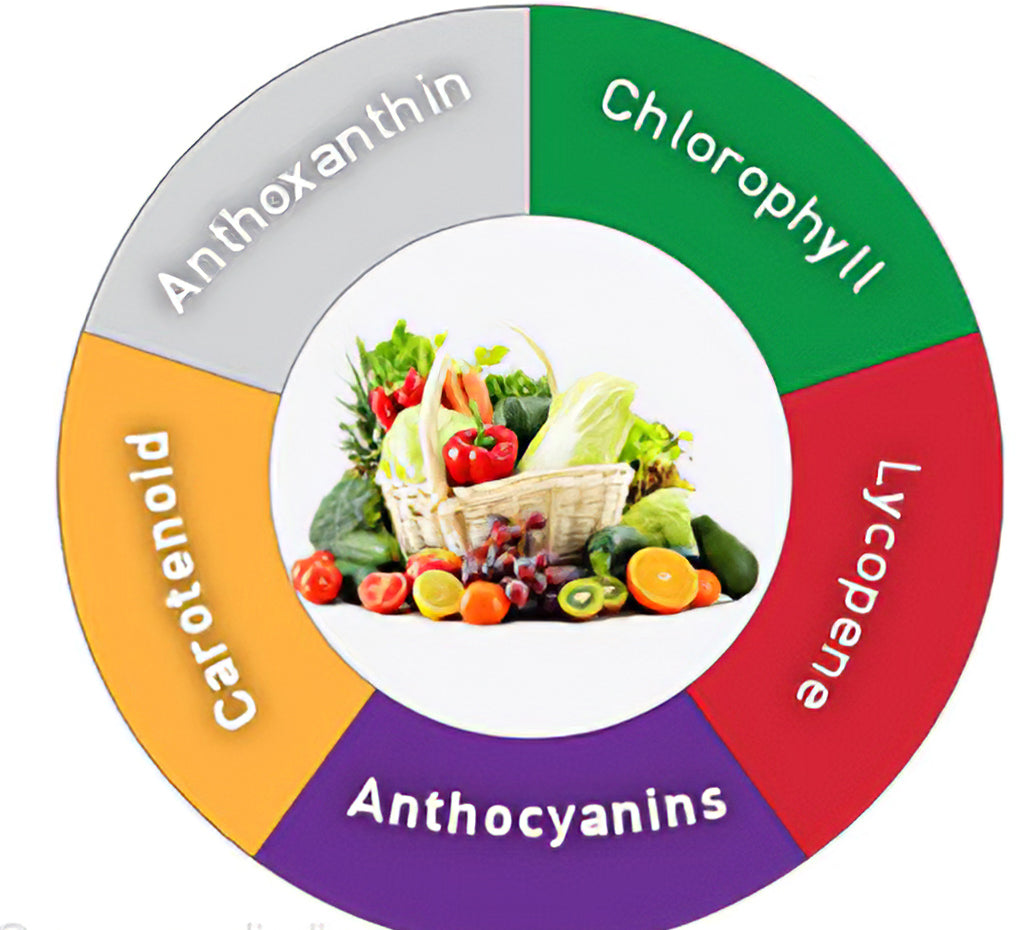Phytonutrients, also known as phytochemicals, are bioactive compounds found in plants that have been associated with various health benefits. They are not considered essential nutrients, but they play important roles in promoting human health. Here are some examples of phytonutrients:
1. Carotenoids: Carotenoids are pigments responsible for the vibrant colors in fruits and vegetables. Examples include beta-carotene (found in carrots and sweet potatoes), lycopene (found in tomatoes), and lutein (found in leafy greens). Carotenoids act as antioxidants and may help reduce the risk of certain cancers and eye diseases.
2. Flavonoids: Flavonoids are a large group of phytonutrients with antioxidant and anti-inflammatory properties. They are found in fruits, vegetables, herbs, spices, and beverages like tea and red wine. Examples include quercetin (found in onions and apples), kaempferol (found in broccoli and kale), and epicatechin (found in dark chocolate). Flavonoids have been associated with cardiovascular health, reduced inflammation, and improved cognitive function.
3. Resveratrol: Resveratrol is a phytonutrient found in grapes, berries, and peanuts. It has gained attention for its potential benefits in heart health and longevity. Resveratrol has antioxidant and anti-inflammatory properties and may have positive effects on blood pressure and cholesterol levels.
4. Curcumin: Curcumin is the active compound in turmeric, a spice commonly used in Indian cuisine. It has antioxidant and anti-inflammatory properties and has been studied for its potential benefits in reducing chronic inflammation and supporting brain health.
5. Sulforaphane: Sulforaphane is a phytonutrient found in cruciferous vegetables like broccoli, cauliflower, and Brussels sprouts. It has been studied for its potential anti-cancer properties and its ability to support detoxification processes in the body.
6. Anthocyanins: Anthocyanins are pigments responsible for the vibrant red, purple, and blue colors in fruits and vegetables such as berries, cherries, and red cabbage. They possess antioxidant and anti-inflammatory properties and may contribute to cardiovascular health and brain function.
These are just a few examples of the many phytonutrients found in plants. Each phytonutrient has its unique properties and potential health benefits. Consuming a diverse range of plant-based foods is an excellent way to incorporate various phytonutrients into your diet and promote overall health and well-being.
A Phytonutrient Poem
In nature's realm, where colors dance,
A symphony of health, a vibrant trance.
Phytonutrients, they take the stage,
With gifts for wellness, a healing sage.
Carotenoids, like sun's warm embrace,
Beta-carotene, lycopene's grace.
Lutein and zeaxanthin, eye's delight,
In fruits and veggies, they shine so bright.
Flavonoids join, a diverse crew,
Quercetin, kaempferol, painting life anew.
Epicatechin, catechins lend their power,
Rutin and hesperidin, like a healing flower.
Resveratrol, from grapes it flows,
With antioxidants, heart health it bestows.
Curcumin, golden spice of might,
Fighting inflammation, a warrior in sight.
Sulforaphane, from crucifers we find,
Detox and protection, a gift so kind.
Allicin in garlic, its pungent embrace,
Genistein in soy, nature's balancing grace.
Ellagic acid, berries' tangy kiss,
Gingerol's warmth, soothing amiss.
Isothiocyanates, a cruciferous delight,
Saponins and phytosterols, in plants taking flight.
Proanthocyanidins, nature's secret tie,
Ginger's zing, coumarins with a sigh.
Terpenes, like whispers in the breeze,
Betaine's essence, from beets to please.
Oleuropein in olives, Mediterranean's pride,
Chlorophyll's green, life's vibrant stride.
Caffeic acid, in coffee's embrace,
Fruits and veggies, nature's precious grace.
These phytonutrients, a poetic blend,
Nature's gifts, on health they tend.
In rainbow hues, they offer might,
A symphony of wellness, a glorious sight.
